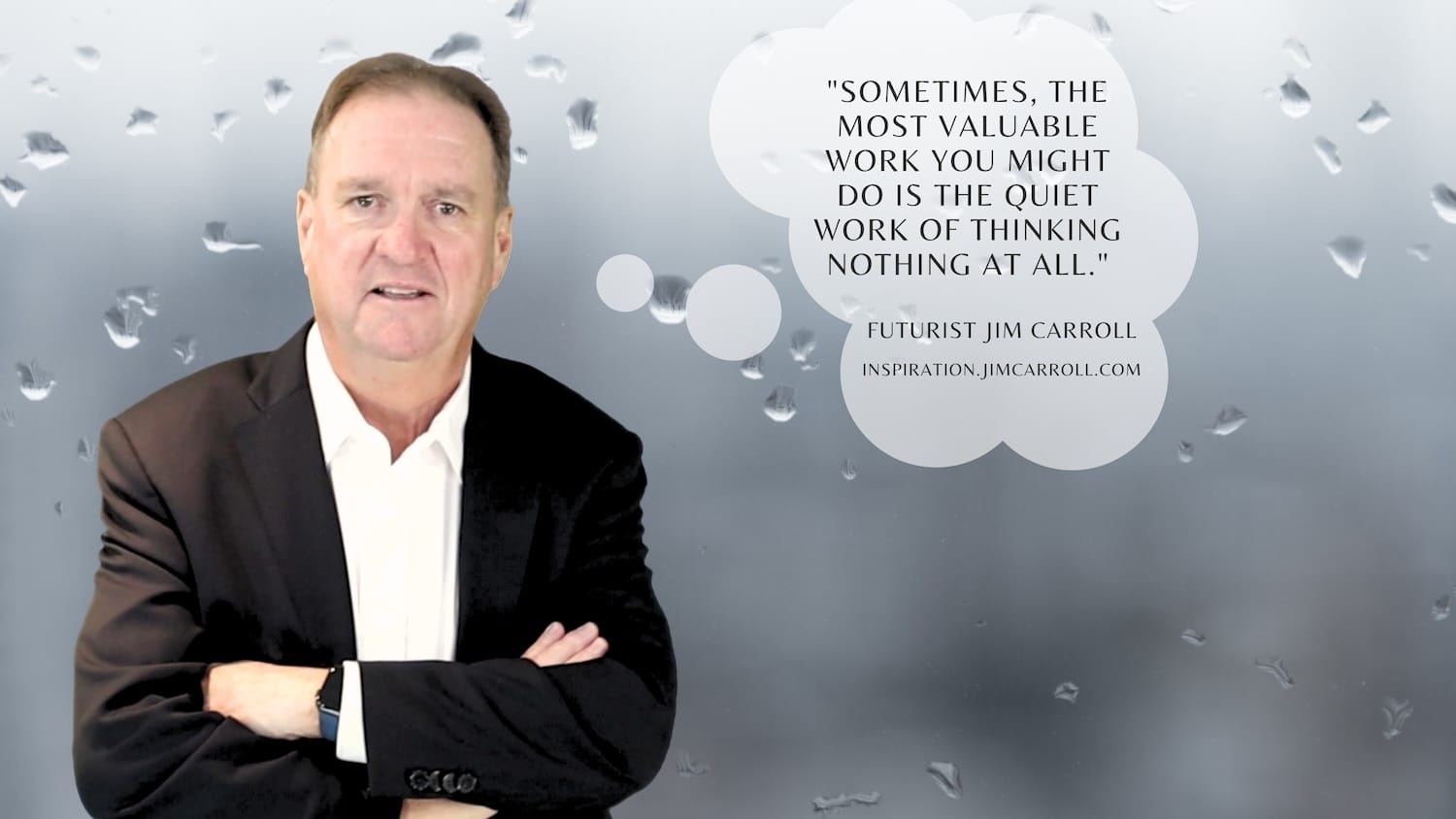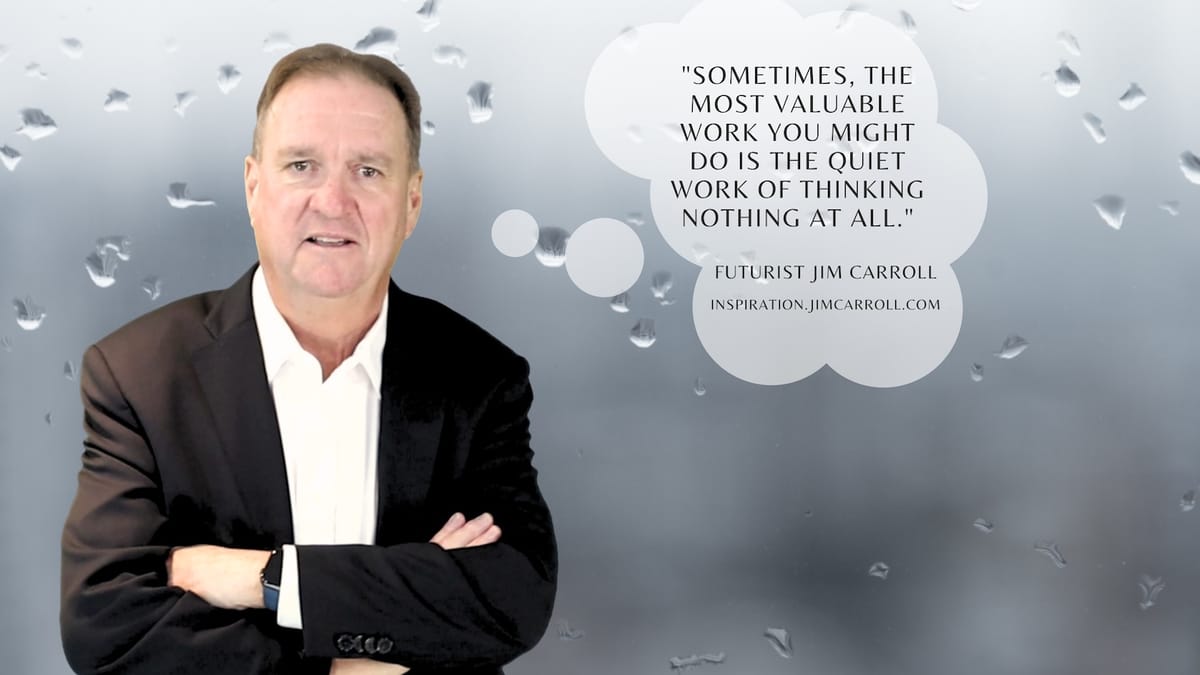"Sometimes, the most valuable work you might do is the quiet work of thinking nothing at all." - Futurist Jim Carroll

Let's get right to the point.
It's OK to daydream.
It's OK to get lost in your thoughts.
It's OK to be absent-minded.
It's OK to lose your focus.
It's OK to stare blankly out the window.
It's OK to let your mind wander.
It's OK to have a thought pop into your head unrelated to what you're doing.
It's OK to take a mental detour.
It's OK to let your thoughts drift.
It's OK to not have an immediate, practical goal for your thinking.
It's OK to be a little disorganized in your thoughts.
It's OK to mull things over slowly.
It's OK to take an unguided mental walk.
It's OK to space out.
It's OK to ponder an unlikely scenario.
It's OK to doodle without a plan.
It's OK to follow a train of thought to an unexpected destination.
It's OK to let your mind jump from one idea to the next.
It's OK to not check things off a list right now.
It's OK to mentally play with concepts.
It's OK to get stuck in your head.
It's OK to revisit old memories for inspiration.
It's OK to have an 'aha!' moment while doing nothing.
It's OK to trust your intuition over logic for a bit.
It's OK to embrace mental downtime.
It's OK!
Here's why: Have you ever been told to stop staring out the window and get back to work? It turns out that letting your mind wander might actually be one of the smartest things you can do. Scientists have discovered that daydreaming isn't laziness—it's your brain doing some of its most important creative work.
And as someone who has helped organizations around the world with concepts related to innovation, it's a story I often share from the stage.
Consider this: Your brain operates in two different modes: focused thinking and diffuse - or unfocused - thinking.Focused thinking is what happens when you're concentrating hard on a math problem or writing an essay. It's great for learning new information and working through things step-by-step. But here's the catch: you can't be creative while you're hyper-focused.
That's where daydreaming, drifting, imaging comes in - aka diffuse thinking - comes in. When you let your mind wander, space out, or daydream, your brain switches into a different mode that makes unexpected connections between ideas. This is when you have those "aha!" moments where a solution suddenly pops into your head.
The secret to being creative and solving tough problems isn't to work harder—it's to switch back and forth between these two modes.
History backs this up with some pretty cool examples. The chemist who figured out the structure of the benzene molecule did it after daydreaming about a snake eating its own tail. Archimedes discovered his famous principle while taking a bath. Isaac Newton came up with ideas about gravity while watching an apple fall from a tree. None of these breakthroughs happened while these scientists were grinding away at their desks—they happened during mental breaks when their minds were free to wander.
So the next time someone tells you to stop daydreaming, you can tell them you're actually problem-solving.
You are doing important work!
You are being creative!
Because it's OK - because your brain will thank you by coming up with ideas you never would have found while staring at a screen.
Futurist Jim Carroll zones out frequently.

